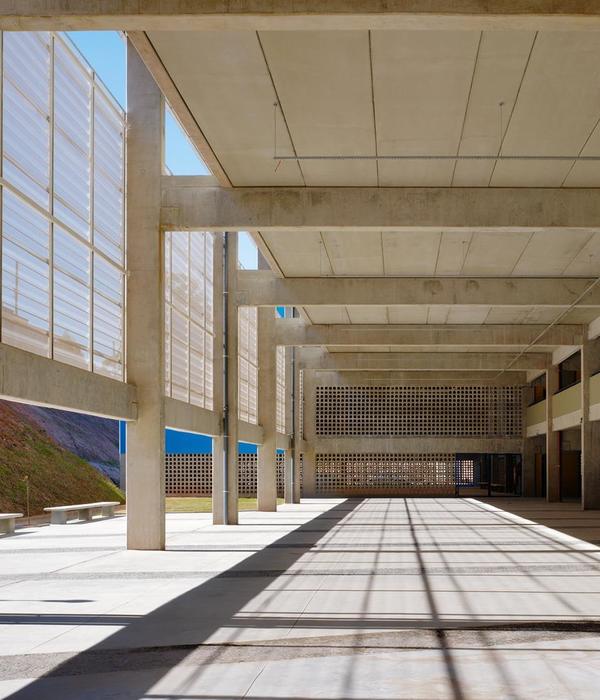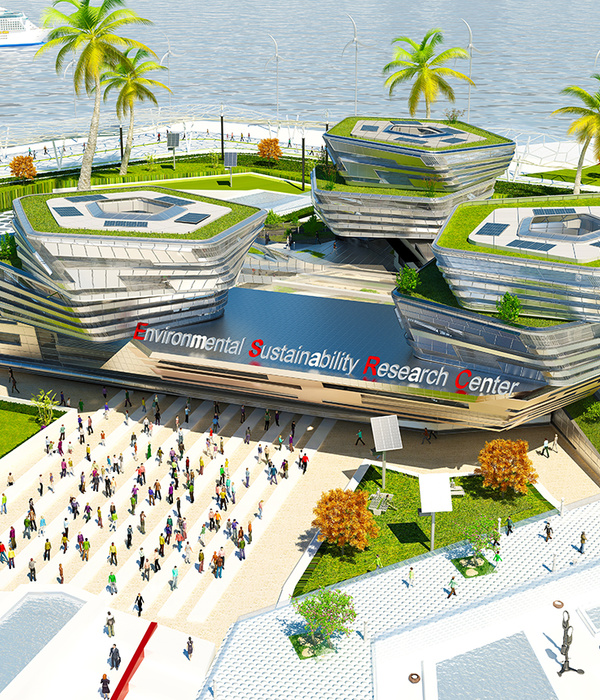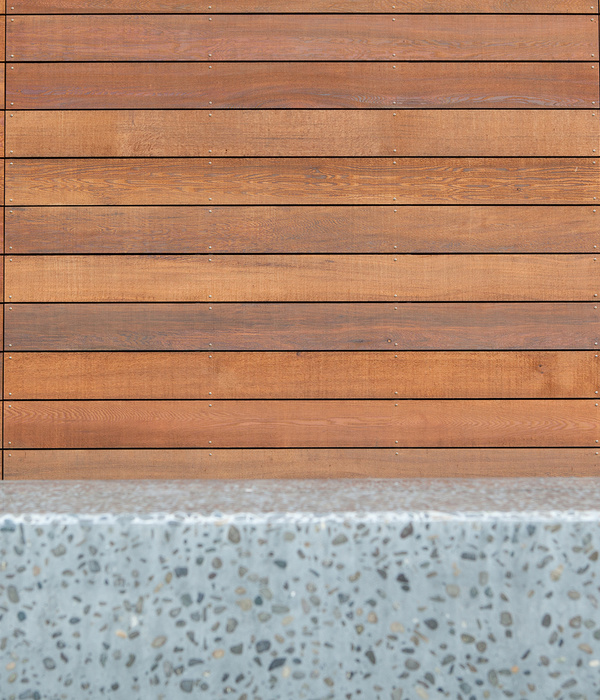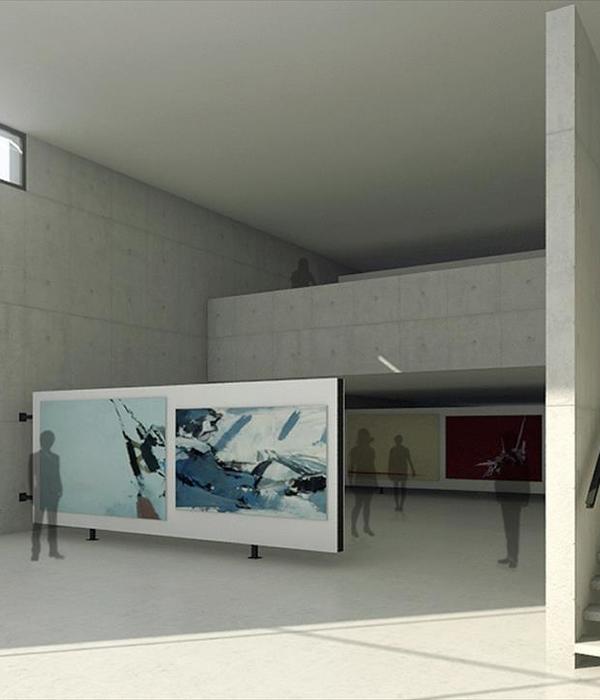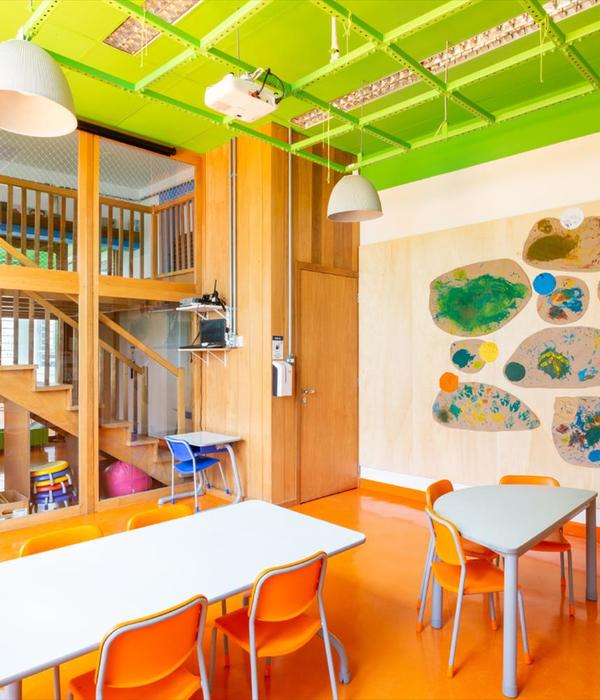来自都灵的建筑事务所BDR bureau完成了都灵恩里科·费米学校(Enrico Fermi School in Turin)的改建,展现了对意大利学校在文化、教育以及建筑方面的思考。该方案在2016年赢得了由”Torino Fa Scuola”发布的国际设计竞赛,其倡议者为Compagnia di San Paolo和Agnelli基金会,合作方为都灵市政府以及学校基金会。
Turin-based architectural firm BDR bureau completes the transformation of the new Enrico Fermi School in Turin, the winning project of an international competition launched in 2016 by “Torino Fa Scuola”. The initiative, promoted by the Compagnia di San Paolo and the Fondazione Agnelli, in collaboration with the City of Turin and “Fondazione per la Scuola”, embodies a cultural, pedagogical and architectural reflection on the new learning spaces of the Italian school.
▼项目概览,project overview
既有的教学楼修建于1960年代,位于都灵东南部的Nizza Millefonti区,介于Lingotto旧工业区和波河之间。该方案对既有学校进行了扩建和功能上的改进。新学校旨在成为社区中不可分割的一部分,同时与城市肌理相融,它将代表意大利校园建筑以及教育的未来。
The existing school building, built in the 1960s in the Nizza Millefonti district between the former industrial area of the Lingotto and the Po river in the south-east area of Turin, has been extended and it is functionally rethought. The new educational needs – in which the school becomes an integral part of the community and merges with the urban fabric – represents the future of education and architecture for the Italian school.
▼建筑与周边城市环境,the building in its context
▼远景,distant view
费米学校是一所中学,入口和外部空间的重置使其得以向城市空间敞开。既有建筑的背面如今成为了新的主入口,在营造绿色空间的同时向附近的街道展开,强调出社区校园的概念。首层空间作为公共区域的拓展,结合了一系列向公众自由开放的服务设施,包括健身房、图书馆、礼堂和自助餐厅等。
The Fermi School, a middle school, opens up to the urban sphere through the reorganization of its entrances and of its external spaces. The back of the existing building becomes the large new main entrance, shaping a green space while unfolding to the neighborhood and emphasizing the concept of a community school. The ground floor is an extension of the public space: integrating a series of services open to everyone, such as the gym, the library, the auditorium and the cafeteria.
▼轴测图,axon
建筑师Alberto Bottero和Simona Della Rocca表示:“我们希望该项目能够与既有建筑形成对话,同时改变和优化它的功能。新的空间元素、透明度以及附加的功能空间共同对原始结构进行了重释,使其成为一座向城市开放的校园。”
“We wanted a project able to dialogue with the existing building and revolutionize its function at the same time. New spatial elements, transparencies and additions reinterpret the original structure with the aim of opening the school to the city.” affirm the architects Alberto Bottero and Simona Della Rocca.
▼建筑外观局部,exterior view
▼入口立面,entrance
BDR bureau的方案主要以“增加”的形式来实现:全新的钢结构塑造了一个可栖居的外墙系统,并通过户外平台为教学活动提供了空间,在建立连接空间的同时也起到了被动式遮阳的作用。模块化的新结构为建筑勾勒出了一个纤细的骨架,并由金属线网加以完善,使室内外空间形成通透的视觉连接。
▼外墙系统示意,axon schemes-envelope
BDR bureau mainly operates by addition: a new steel structure creates an inhabited envelope where the terraces are an integral part of the teaching program, embraces new connective spaces and works as a passive shield. The modularity of the new frame outlines a thread-like backbone, completed by a metal net that highlights the visual permeability and the relationship with the outside.
▼可栖居的外墙系统,an inhabited envelope
▼户外平台,outdoor terraces
这种框架的构建方式也被运用到了旧建筑当中,外立面采用了颗粒丰富的石膏饰面,带来肌理和深度的变化。新的主立面和朝向庭院的、带有巨大窗户的立面加强了不同体量与户外空间的联系,为原始的布局赋予了新的内涵。
The frame’s compositional scheme is also repeated in the old building, whose façades are treated with a multigrain plaster creating depth variations. The façades of the new front and those facing towards the courtyards maintain large windows that enhance the relation between the various different volumes and the outdoor spaces, bringing new meaning to the original layout.
▼旧建筑的外立面采用了颗粒丰富的石膏饰面,the old façades are treated with a multigrain plaster creating depth variations
首层空间被构想为一个“城市中心”,不同的功能被集中到中庭,并直接与花园及两个入口相连。与建筑外观相呼应的楼梯间作为垂直交通元素,使中庭与上方的几个楼层彼此贯通。灵活的图书馆、礼堂空间、自助餐厅以及体育馆使首层的公共空间变得更加完善。
The ground floor is designed as a civic center, where the different functions are gathered in the atrium, directly connected with the garden and the two entrances. The atrium stretches to the upper floors thanks to a vertical element, a stairwell that evokes the external architectural language. The flexible library and auditorium space, the cafeteria and the gym complete the public spaces on the ground floor.
▼自助餐厅,the cafeteria
▼公共空间,public area
▼交流集会空间,communal space
▼与建筑外观相呼应的楼梯间,the a stairwell that evokes the external architectural language
▼公共区域细部,public area detailed view
▼体育馆,gym
▼走廊空间,corridor
▼图书馆,library
顶部的两个楼层容纳了休闲空间和集体活动空间,教学空间则按照集群分布,形成由教室、衣帽间、服务空间和非正式学习空间构成的多个空间单元。教室成为了连接室内外空间的集会点和联结器,一方面从视觉上连接了公共空间,一方面也提供了通向露台的入口。
On the two upper floors, the atrium accommodates recreational and collective spaces, while the educational activities are organized in clusters – spatial units composed of classrooms, cloakrooms, services and informal learning spaces. The classrooms become the meeting point and the linkage between inside and outside, retaining a visual connection to the common space and giving access to the terraces.
▼教室,classroom
▼衣帽间,cloakroom
▼教学空间,learning space
教学活动和娱乐活动都会在户外进行,一系列开放空间、绿化区和周围景观形成对话,促进学生和教师通过日常活动相互交流想法,带来更多的价值和意义。
Just like in the experimental en plein air schools, the educational and recreational activities take place outdoors. In these open spaces, the green areas and the dialog with the surrounding landscape encourage students and professors to meet and exchange ideas in their daily activities, thus adding great value.
▼教学活动和娱乐活动都会在户外进行,the educational and recreational activities take place outdoors
与社区共享的整体规划提出了更加明确和长远的目标:“通过修建学校来为教学和教育树立新的标准。”与此同时,建筑的创新性和新空间元素的加入使得费米学校成为了一个值得研究的案例,为校园建筑遗产的重新利用提供了可复制的模板。
The planning project shared with the community carries an explicit and higher ambition as well: “to set the standard by building a school in both the pedagogical and educational sense”. At the same time, the innovation of the school structure and the inclusion of new architectural and spatial elements make the Fermi School by BDR bureau a case study, a replicable model for the requalification of the school building heritage.
▼结构细部,structural detail
▼首层平面图,ground floor plan
▼二层平面图,first floor plan
▼三层平面图,second floor plan
▼立面图,elevation
▼剖面图,section
Project: Enrico Fermi School Address: via Biglieri 19, Turin (Italy) Client: Fondazione Agnelli, Compagnia di San Paolo Programme: middle school with library, auditorium, cafeteria, gym, classrooms and public spaces International competition: first prize, 2017 Design phase: preliminary project (October – November 2017); assigned project (December 2017 – January 2018); executive project (February – March 2018) Construction phase: July 2018 – September 2019 GFA: 5.096 sqm Area surface: 5.579 sqm Costs (including furniture, technical costs, landscape): 7.300.000 € (VAT included) Architect: BDR bureau Structural and executive planning: Sintecna srl Mechanics and electrical advisor: Proeco ss Sustainability and acoustics advisor: Onleco srl Furniture design: BDR bureau Construction supervision: Sintecna srl Art direction: BDR bureau Project Manager: FCA Partecipazioni S.p.A Materials Façades: plaster, metal structural work, stainless steel wire mesh Interior flooring: linoleum, rubber Exterior flooring: draining concrete, precast concrete, prestressed adaxite coating Windows: aluminum, selective glass Ceiling: acoustic fiber plaster Furniture Benches and chairs: VS school furniture Pouf, small sofas, folding steel tables: Pedrali Canteen and auditorium chairs: Infiniti Wardrobe, bookcases, built-in wardrobes, entrance counter, cafeteria: custom-made
{{item.text_origin}}






